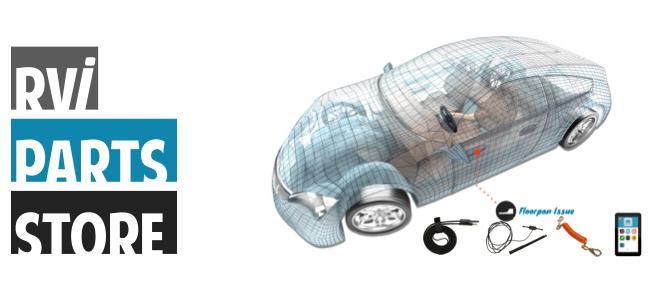Towed Battery Charger FAQ
Frequently Asked Questions

A. There are not many things worse than a dead towed battery. Many towed vehicles today have a large current draw on the battery when towing. The Towed Battery Charger will prevent unseen parasitic loss on your towed vehicle battery, while giving charging feedback. It is a great peace of mind product when towing. No more need for a charge line that gives you zero feedback.
A. No. All models of RVibrake are extremely power friendly. The max amp draw of RVibrake is 8 amps. For a frame of reference, your brake lights pull 4 amps.
A. The Towed Battery Charger is specifically designed to work a 6-pin connector on the towed. A 6-pin umbilical has the 4 pins you need for the light system, as well as a pin for electric brakes and a 12V hot pin. When the Towed Battery Charger is installed, the motorhome is running and the umbilical is plugged in, the towed battery stays topped off.
A. Yes and no. The Towed Battery Charger cannot get a hot 12V from the motorhome through a 4-pin umbilical. In order to bring the correct 12V to the bumper of the towed for the Towed Battery Charger to tie into, you'll need to either:
A. Yes. You'll need to create an umbilical that brings 12V and a ground from the motorhome to the towed vehicle's bumper in this scenario. In order to bring the correct 12V to the bumper of the towed for the Towed Battery Charger to tie into, you'll need to either:
A. We always recommend that you follow what the owner's manual says to do for towing. In many cases the Towed Battery Charger will provide enough charge to overcome not pulling certain fuses.
Q. What if I have to disconnect the battery on my towed vehicle for towing? How do I install the Towed Battery Charger?
A. If you have to disconnect the towed vehicles battery for towing, then it is recommended to disconnect the negative and positive terminal. Failure to do so could cause damage on the towed vehicle. The easiest way to do this is with 2 of our Towed Battery Disconnects.
A. There can be a few reasons why the battery is dying. You could have a bad cell in the towed battery, to much current draw from not pulling fuses, 12V might not be running from the motorhome batteries to the 7-pin at the rear bumper, there could be a blown fuse, or the Towed Battery Charger(TBC) could be defective. Try the following troubleshooting steps:
Test for 12V at the bumper of the motorhome
- With the motorhome running, use a multimeter and touch the negative lead to the chassis and go around the pins on the 7-pin receiver at the bumper of the motorhome.
- If you see hot 13+ volts, then we know the receiver is good and can proceed to test the umbilical.
- If you do not find a hot 13+ volts, then a dedicated 12V accessory might not be run to the 7-pin or you have a corroded circuit lead.
Test the umbilical
- Plug in the umbilical into the motorhome's 7-pin.
- Using a multimeter, touch the negative lead to the ground pin and go around the pins.
- If you see hot 13+ volts, then we know the umbilical is good and can proceed to test the TBC.
- If you do not find a hot 13+ volts, then the umbilical is bad.
Check for proper ground at the towed vehicle
The TBC relies on the ground for the wired light system that gets installed on the towed vehicle to complete the charging circuit. There are two types of wired light systems: the first has to be grounded and uses the existing light bulbs at the rear of the towed, the second is a self-contained loop that does not have to be grounded to the chassis and uses separate light bulbs. Check the back of the 6-pin receiver on the towed and make sure the ground goes to the chassis. If it does not, then you need to splice into the ground wire(usually white) and ground it to the chassis.
Test the TBC
- Check the glass barrel fuse on the side of the TBC. If the fuse is good, proceed to test the TBC.
- With the umbilical unplugged from the towed vehicle, use a multimeter to get the towed battery's static voltage.
- Plug in the umbilical to the motorhome and the towed vehicle.
- Start the motorhome.
- Use the multimeter on the towed battery's terminals and read the charging voltage. There should be an increase in the charging voltage over the static voltage. If you do not see an increase, then something is not working properly on the TBC.
A. There are a few possibilities for this. The first thing to check is the fuse on the side of the Towed Battery Charger. If that's not it, then refer to the troubleshooting steps from the question above.





